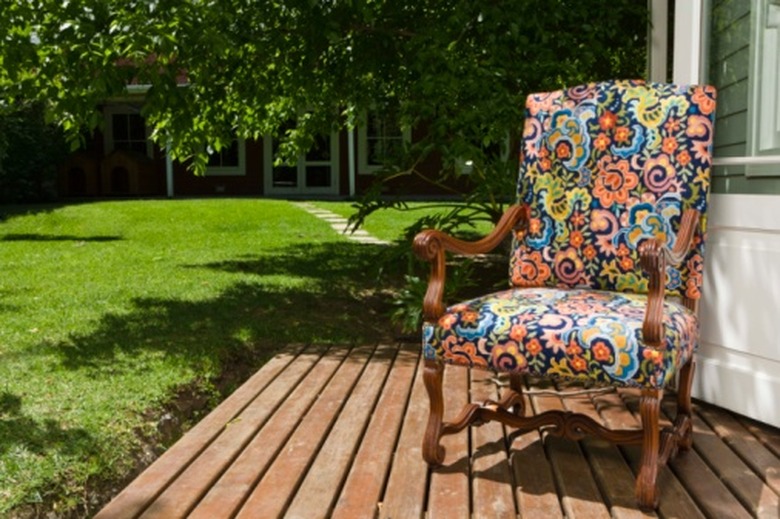Types Of Grass To Grow In Central Alabama
Plant warm-season grasses in central Alabama for best results in sun or partial shade. Cool-season grasses like Kentucky bluegrass, ryegrass and fine fescue do most of their growing from fall to spring, and prefer cooler temperatures. Prepare the planting site well ahead of spring planting. Leveling, cultivating and removing rocks and vegetation will give the grass the best chance to establish quickly. The Alabama Cooperative Extension System recommends several warm-season grasses for Alabama lawns.
Zoysiagrass
Plant zoysiagrass (Zoysia spp.) anywhere in central Alabama. One of the most cold-tolerant of warm-season grasses, it does well at any elevation, provided it gets about 60 percent sun each day. It may become sparse in more heavily shaded areas. Because it grows slowly, it's faster to lay zoysia sod than establish a lawn from seed. Zoysiagrass becomes quite dense, and may need dethatching every few years. Other than that, it is drought-tolerant and makes a durable lawn for high-traffic areas.
- Plant warm-season grasses in central Alabama for best results in sun or partial shade.
- Cool-season grasses like Kentucky bluegrass, ryegrass and fine fescue do most of their growing from fall to spring, and prefer cooler temperatures.
Bermudagrass
Seed your lawn with bermudagrass (Cyndodon spp.) only if your central Alabama landscape lies in full sun. Bermudagrass will not tolerate shade. It is extremely fast growing, and spreads through running roots, making it one of the more favored lawn grasses. Durable and tough with a fine texture, Bermudagrass recovers quickly from damage, but may need to be mowed once a week during growing season to keep it in check. Like Zoysia, it is drought-tolerant.
Bahiagrass
Use bahiagrass (Paspalum notatum) for playing fields and very high-traffic areas, on slopes or near water in central Alabama. Its main advantage is an extensive root system that can stabilize soil where erosion or dust is a problem. Disadvantages include a clumping growth habit that can be tough on mower blades, and a tendency to produce tall seedheads if it is allowed to get out of control. Bahiagrass can be used for lawns, but is probably best for areas where appearance isn't the top priority.
- Seed your lawn with bermudagrass (Cyndodon spp.)
- Durable and tough with a fine texture, Bermudagrass recovers quickly from damage, but may need to be mowed once a week during growing season to keep it in check.
Centipedegrass
Plant centipedegrass (Eremochloa ophiuroides) for a fast-growing, low-maintenance lawn that needs little to no fertilizer. Centipedegrass is drought-tolerant, has a coarse texture, and is lighter green than most other lawn grasses in central Alabama. Its worst problem is a tendency to develop thatch. Centipedegrass does best when kept short — about 1 1/2 inches — and may require frequent mowing to keep it healthy and dense.
